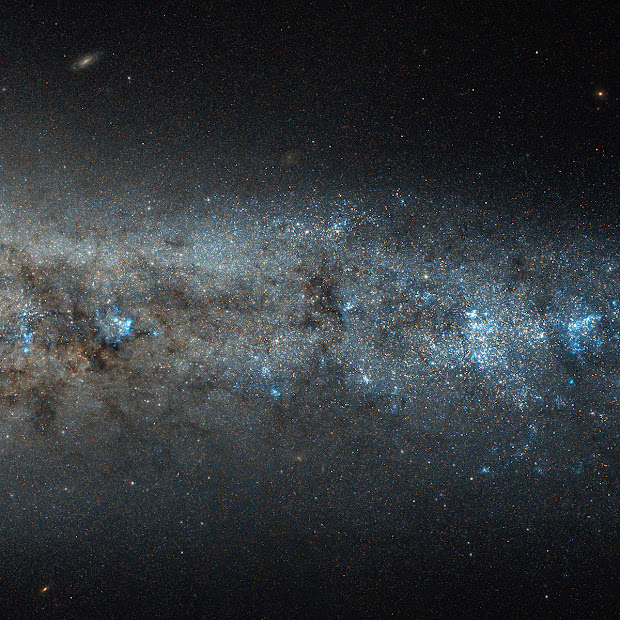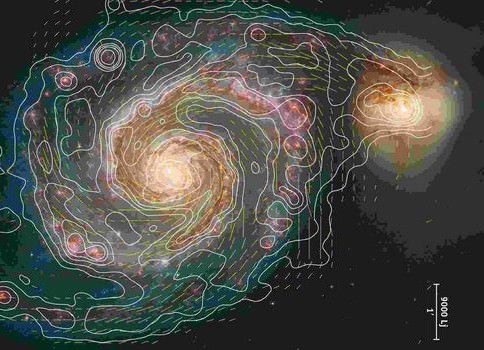What can we say about the likely face-on appearance of NGC 5866 based on its edge-on view? Let's compare it with face-on NGC 4314.
In NGC 5866 we have a short, extremely thin dark dust lane, at the outer edges of which soft "jets" of pale blue light seem to emanate. The inner part of the galaxy is enveloped in an extensive and elongated cocoon of non-blue light.
Now look at NGC 4314. This galaxy has a yellow center, surrounded by a relatively small but very actively starforming ring of dust, peppered with pink emission nebulas. Outside this ring of dust and star formation, we can make out two short, pale bluish, soft and smooth "arms".
These arms are the remnants of past star formation. Star formation scatters and uses up dust and forms high-mass stars that soon die. After a while, what is left is a smooth population of stars of similar ages, where the brightest are stars of spectral class A, similar to Sirius and Vega. After a while, the "Vegas" die, too, and gradually the remnant arms blend with the background, becoming all yellow.
So what we see in NGC 5866 is somewhat similar to what we see in NGC 4314. However, there is a difference.
Take a look at the picture of NGC 4314 in its entirety to see how small the inner part is. The rest of the galaxy, while it has an interesting shape, is uniformly smooth and non-blue in color.
Also take a look at a small part of edge-on galaxy
NGC 4631. This is a starburst galaxy, and the central dust lane of this galaxy is broad, broken and chaotic, because high-mass stars wreak havoc on the orderliness of dust lanes. Note that we can't see a lot of the galaxy above or below the dust lane. Note, on the other hand, that the dust lane of NGC 5866 is almost razor-thin and sharp, and we can see "a lot of galaxy" above and below it.
(Even though we can see "smoke loops" rising from the dust lane. These may well be remnants of pas supernovas.)
Conclusion? There is almost nothing going on in the dust lane of NGC 5866. There is very little star formation, and possibly no high-mass star formation at all, in this galaxy.
NGC 5866 is a "red and dead" galaxy, with a small, shrinking inner dust disk and pale remnants of its former star formation glory in the shape of two very pale, very faintly bluish tiny inner arms.
Ann
 Edge-On Galaxy NGC 5866
Edge-On Galaxy NGC 5866



